Feb. 28, 2019
Prelims Pointers
Feb. 28, 2019
About:
- Chips unveiled: four chips were unveiled at the event designed by SIGNALCHIP.
- SCBM3412: a single chip 4G/LTE modem including the baseband and transceiver sections in a single device.
- SCBM3404: a single chip 4X4 LTE baseband modem.
- SCRF3402: a 2X2 transceiver for LTE.
- SCRF4502: a 2X2 transceiver for 5G NR standards.
- SCBM3412: a single chip 4G/LTE modem including the baseband and transceiver sections in a single device.
- Significance:
- The launch of the chips was significant as India is entering an elite club. At present only 8 companies and a few countries can design and build semiconductor chips.
- This will have huge implications on the country’s data security and sovereignty besides having economic implications.
- India cannot afford to lag behind while US and China are battling it out for the upperhand in ICT technology.
- The launch of a world class product by SIGNALCHIP is start of the Third Wave, after Software and IndiaStack as First and Second wave.
- The launch of the chips was significant as India is entering an elite club. At present only 8 companies and a few countries can design and build semiconductor chips.
- IndiaStack is a set of APIs that allows governments, businesses, startups and developers to utilise an unique digital Infrastructure to solve India’s hard problems towards presence-less, paperless, and cashless service delivery.
- India Stack is being implemented in stages, starting with the introduction in 2009 of the Aadhaar "Universal ID" numbers. The next stages were the introduction of eKYC (electronic Know Your Customer), followed by e-Sign, UPI (Unified Payments Interface) and most recently, DigitalLocker.
Prelims Pointers
Feb. 28, 2019
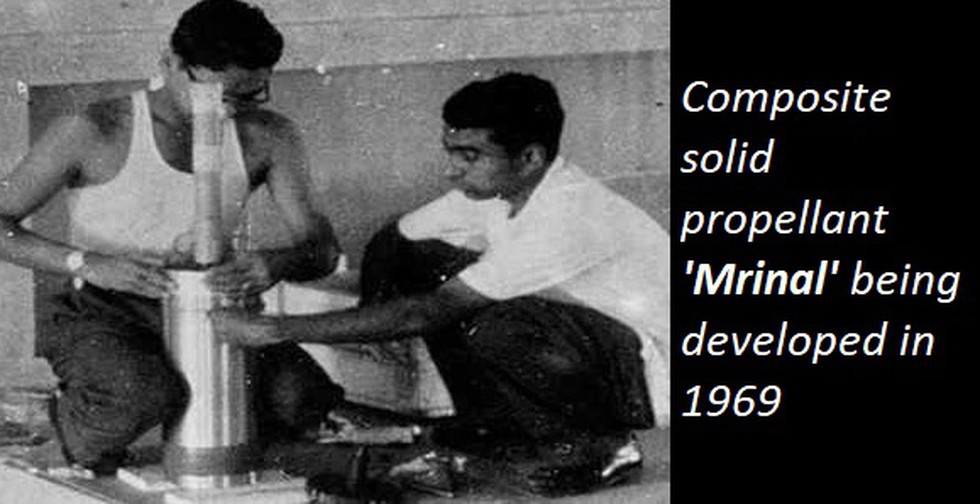
About:
- Mrinal was the Indian space programme's first composite solid propellant for launch vehicles.
- The propellant was launched from Thumba aboard an RH-75 sounding rocket on February 21, 1969 by members of the Propellant Engineering Division (PED) of the Vikram Sarabhai Space Centre (VSSC).
- It was named after Mrinalini Sarabhai (an Indian classical dancer and wife of the Indian physicist Vikram Sarabhai).
Prelims Pointers
Feb. 28, 2019
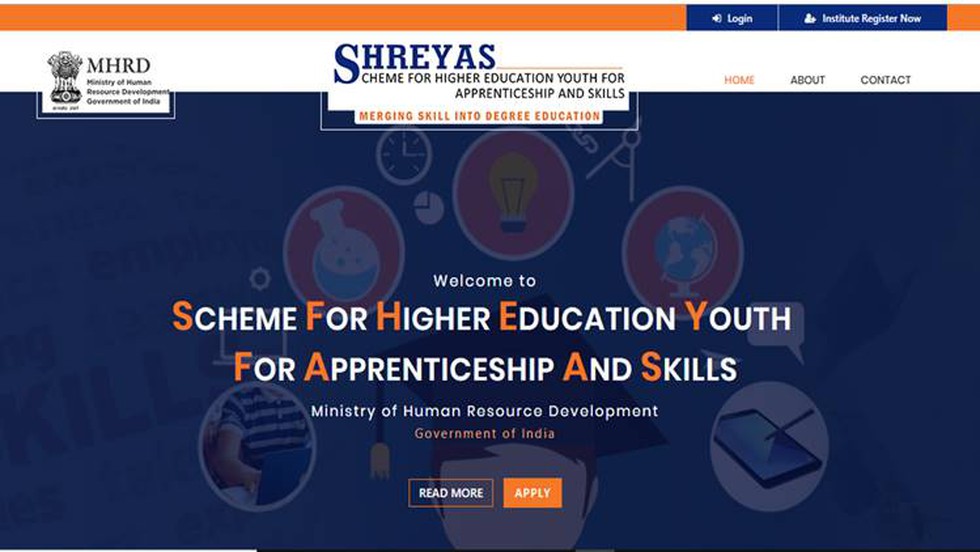
About:
- Full name: SHREYAS is an acronym for “Scheme for Higher Education Youth in Apprenticeship and Skills”.
- Objectives:
- To improve employability of students by introducing employment relevance into the learning process of the higher education system.
- To forge a close functional link between education and industry/service sectors on a sustainable basis.
- To provide skills which are in demand, to the students in a dynamic manner.
- To establish an ‘earn while you learn’ system into higher education.
- To improve employability of students by introducing employment relevance into the learning process of the higher education system.
- Bodies involved: SHREYAS is a programme basket comprising the initiatives of three Central Ministries, namely the Ministry of Human Resource Development, Ministry of Skill Development & Entrepreneurship and the Ministry of Labour& Employment.
- Sectors covered: The scheme will be implemented by the Sector Skill Councils (SSCs) , initially in the Banking Finance Insurance Services (BFSI), Retail, Health care, Telecom, Logistics, Media, Management services, ITeS and Apparel sectors.
- Three Tracks in Implementation in SHREYAS: The programme would witness simultaneous implementation along three tracks.
- 1st Track: Add-on apprenticeship (Degree apprenticeship): The students who are currently completing the degree programme would be invited to choose a job role of their choice from a selected list of apprenticeship job roles given by the Sector Skill Councils (SSC) of the Ministry of Skills Development and Entrepreneurship (MSDE).
- 2nd track (Embedded Apprenticeship): Under this approach, the existing B.Voc programmes would be restructured into B.A (Professional), B.Sc (Professional) or B.Com (Professional) courses which would include mandatory apprenticeship.
- 3rd Track: Under this, the National Career Service (NCS) portal of Ministry of Labour& Employment would be linked with the Higher Education institutions.
- 1st Track: Add-on apprenticeship (Degree apprenticeship): The students who are currently completing the degree programme would be invited to choose a job role of their choice from a selected list of apprenticeship job roles given by the Sector Skill Councils (SSC) of the Ministry of Skills Development and Entrepreneurship (MSDE).
- Financing:
- Under the National Apprenticeship Promotion Scheme (NAPS), Central Government shares 25% of the stipend per month subject to a maximum of Rs.1500 p.m during the period of the apprenticeship.
- Apart from that, an amount upto Rs.7500 will be met towards basic training cost, where needed.
- Under the National Apprenticeship Promotion Scheme (NAPS), Central Government shares 25% of the stipend per month subject to a maximum of Rs.1500 p.m during the period of the apprenticeship.
- Target: In all the tracks together, it is proposed to cover 50 lakh students by 2022.
Prelims Pointers
Feb. 28, 2019

About:
- Objective: To give deaf people the constitutional right to speech and opportunity of freedom of expression.
- Developed by: Indian Sign Language Research & Training Centre (ISLR&TC) under Department of Empowerment of Persons with Disabilities (DEPwD), M/o Social Justice & Empowerment.
- Format:
- The first edition of the dictionary with 3000 words was launched in March 2018. With the second edition, dictionary includes total 6000 words under the categories of academic, legal, medical, technical and everyday terms.
- It has over 6,032 Hindi and English words and their corresponding graphic representation of the signs. It would be available in both print and video formats.
- The first edition of the dictionary with 3000 words was launched in March 2018. With the second edition, dictionary includes total 6000 words under the categories of academic, legal, medical, technical and everyday terms.
Categories: The ISL dictionary consists of words of five categories:
- Everyday Terms: Terms that are used in everyday communication.
- Legal Terms: Legal terminology like “Affidavit”, “Acquittal”, etc.
- Academic Terms: Concepts from Physics, Geography, Biology, Maths, etc.
- Medical Terms: Medical terminology used in hospitals and in medical situations.
- Technical Terms: Terms that are used in vocational training or in computer courses.
According to Census 2011, there are 50.71 lakh hearing impaired persons in India. Most of the hearing impaired persons use Indian Sign Language to communicate.
Prelims Pointers
Feb. 28, 2019

About:
- Background: As per item 8 of Schedule 13 (Infrastructure) of the Andhra Pradesh Reorganization Act, 2014, Indian Railways was required to examine establishing a new railway zone in the successor State of Andhra Pradesh.
- Name: In this background, it has been decided to create a new zone named “South Coast Railway (SCoR)”.
- HQ of new zone: Visakhapatnam.
- Components: The new zone will comprise of existing Guntakal, Guntur and Vijayawada divisions. Waltair division shall be split into two parts.
- One part of Waltair division will be incorporated in the new zone i.e. in South Coast Railway and will be merged with the neighbouring Vijaywada division.
- Remaining portion of Waltair division shall be converted into a new division with headquarter at Rayagada under East Coast Railway (ECoR).
- One part of Waltair division will be incorporated in the new zone i.e. in South Coast Railway and will be merged with the neighbouring Vijaywada division.
- South Central Railway will comprise of Hyderabad, Secunderabad and Nanded divisions.
Prelims Pointers
Feb. 28, 2019

About:
- Objective: To encourage cooperative start-ups and innovative projects in agriculture and allied sectors by providing them cheaper loans.
- Implementing agency: National Cooperative Development Corporation (NCDC).
- Funding: A corpus fund of Rs 1,000 crore has been created by NCDC for this purpose.
- Eligibility: Cooperative registered even one years ago will be eligible.
Scheme Components:
- The scheme has component of subsidy as well as interest subvention.
- Subsidy:
- The funding of a project will be up to 80 % of the project cost for cooperatives in the north eastern region, in the 'aspirational districts' as well as cooperatives which have 100 % women or SC/ST members or People with Disabilities.
- For general category the funding of a project will be up to 70 % of the project cost.
- The funding of a project will be up to 80 % of the project cost for cooperatives in the north eastern region, in the 'aspirational districts' as well as cooperatives which have 100 % women or SC/ST members or People with Disabilities.
- Interest Subvention: Other than the subsidy, the scheme envisages 2 % interest subvention on the loan for the project cost up to Rs 3 crore, including 2 years moratorium on payment of principal.
Prelims Pointers
Feb. 28, 2019
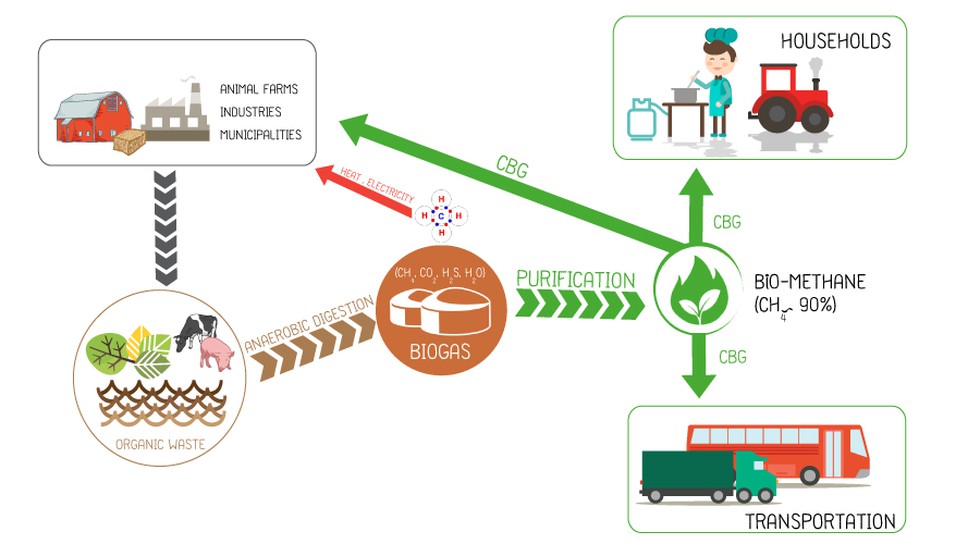
SATAT:
- Full name: SATAT is an acronym for Sustainable Alternative Towards Affordable Transportation.
- Objective: To promote Compressed Bio-Gas as an alternative, green transport fuel with a four-pronged agenda of –
- utilising more than 62 million metric tonnes of waste generated every year in India,
- cutting down import dependence,
- supplementing job creation in the country and
- reducing vehicular emissions and pollution from burning of agricultural / organic waste.
- utilising more than 62 million metric tonnes of waste generated every year in India,
- Strategy: This initiative has been launched with PSU Oil Marketing Companies (OMCs) inviting Expression of Interest (EoI) from potential entrepreneurs to set up Compressed Bio-Gas (CBG) production plants and make available CBG in the market for use in automotive fuels.
Compressed Bio-Gas (CBG):
- Bio-gas is produced naturally through a process of anaerobic decomposition from waste / bio-mass sources like agriculture residue, cattle dung, municipal solid waste etc.
- After purification, it is compressed and called Compressed Bio-Gas (CBG), which has pure methane content of over 95%. CBG is exactly similar to the commercially available natural gas in its composition and energy potential.
- Benefits of CBG:
- With calorific value (~52,000 KJ/kg) and other properties similar to CNG, CBG can be used as an alternative, renewable automotive fuel.
- Given the abundance of biomass in the country, CBG has the potential to replace CNG in automotive, industrial and commercial uses in the coming years.
- There are multiple benefits from converting waste into CBG on a commercial scale: (1) Responsible waste management, (2) reduction in carbon emissions and pollution, (3) Additional revenue source for farmers and (4) Reduction in import of natural gas and crude oil.
Prelims Pointers
Feb. 28, 2019
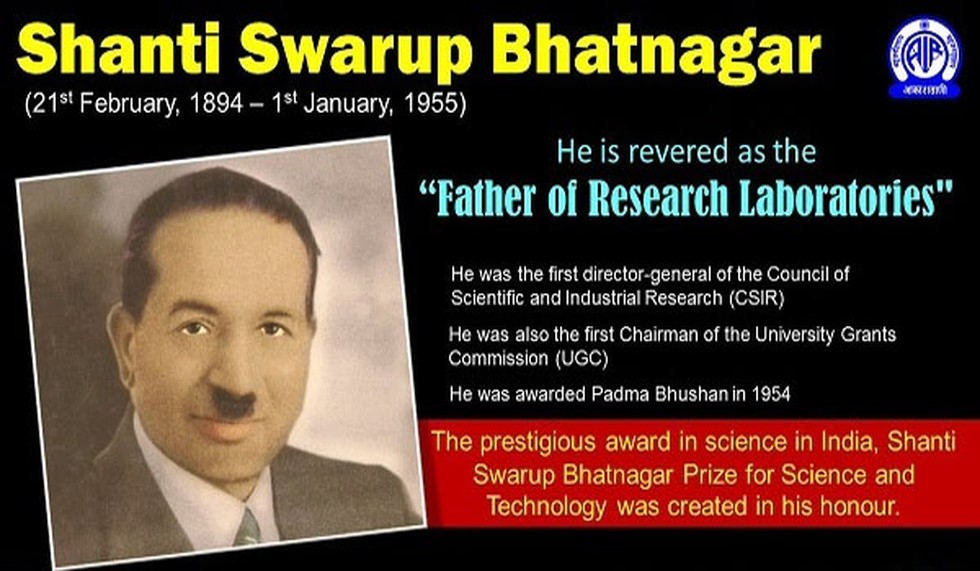
About:
- Given by: Council of Scientific & Industrial Research (CSIR).
- When given: It is an annual award. The names of the recipients are traditionally declared by the Director General on every 26 September, which is the CSIR Foundation Day.
- Objective: The Prize is given each year to recognize outstanding Indian work in various disciplines of Science and Technology.
- Prizes:
- The prize is divided into seven disciplines, namely: (1) Physical Sciences, (2) Chemical Sciences, (3) Biological Sciences, (4) Medical Sciences, (5) Mathematical Sciences, (6) Engineering Sciences and (7) Earth, Atmosphere, Ocean and Planetary Science.
- Further, each discipline can have multiple winners (maximum 2 individuals).
- The prize is divided into seven disciplines, namely: (1) Physical Sciences, (2) Chemical Sciences, (3) Biological Sciences, (4) Medical Sciences, (5) Mathematical Sciences, (6) Engineering Sciences and (7) Earth, Atmosphere, Ocean and Planetary Science.
- Criteria:
- Any citizen of India engaged in research in any field of science and technology up to the age of 45 years is eligible for the prize.
- The prize is awarded on the basis of contributions made through work done in India only during the five years preceding the year of the prize.
- Any citizen of India engaged in research in any field of science and technology up to the age of 45 years is eligible for the prize.
- Prize money: ₹5 lakh.
- Background: It was first awarded in 1958.
- The award is named after Shanti Swarup Bhatnagar (1894 – 1955).
- He was a professor of chemistry.
- He was the first director-general of the Council of Scientific and Industrial Research (CSIR), thus he is revered as the "father of research laboratories".
- He was also the first Chairman of the University Grants Commission (UGC).
- In 1954 he was awarded Padma Bhushan.
Prelims Pointers
Feb. 28, 2019
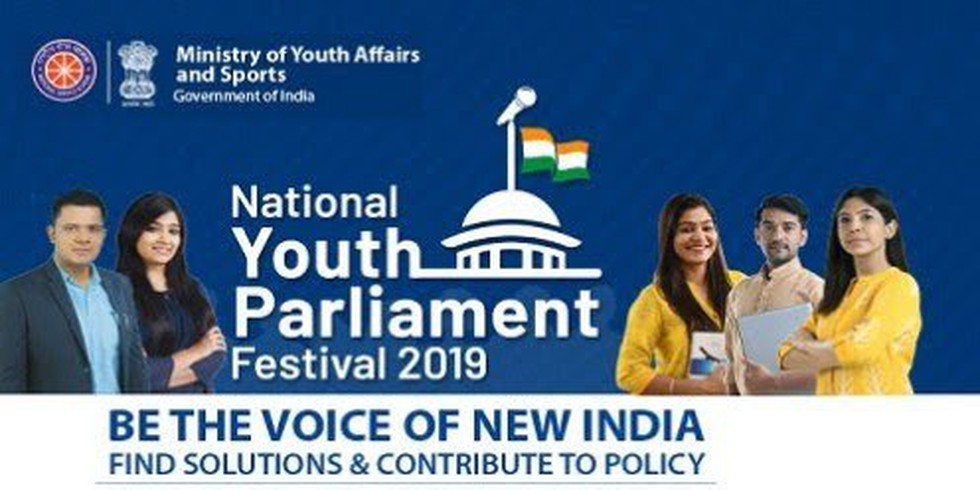
About:
- Background: Prime Minister Shri Narendra Modi, in his Mann Ki Baat address on 31st December 2017, had shared his idea of organizing Youth Parliaments for young people in every district of the country and celebrate it as the “National Youth Parliament Festival”.
- Organized by: National Service Scheme (NSS) and Nehru Yuva Kendra Sangathan (NYKS) under the aegis of Ministry of Youth Affairs and Sports.
- Theme of 2019 Festival: ‘Be the Voice of New India and Find solutions and Contribute to Policy’.
- Duration: 12th of January till 24th of February 2019.
- Objective:
- To hear the voice of youth in this age bracket OF 18-25 who are allowed to vote but cannot contest in elections.
- To encourage the youth to engage with public issues, understand the common man’s point of view, form their opinion and express these in an articulate manner.
- To hear the voice of youth in this age bracket OF 18-25 who are allowed to vote but cannot contest in elections.
- Levels: It was conducted at three levels –
- District Youth Parliament (DYP): A maximum of 100 best speakers shortlisted by the Screening Committee in each district, will participate in the DYP. Youth in the age bracket of 18-25 years are eligible to participate.
- State Youth Parliament (SYP): The best three speakers selected by a Jury from each District Youth Parliament will participate at the SYP.
- National Youth Parliament (NYP): Similarly, the two best speakers selected from each State Youth Parliament will participate as speakers in the NYP.
- District Youth Parliament (DYP): A maximum of 100 best speakers shortlisted by the Screening Committee in each district, will participate in the DYP. Youth in the age bracket of 18-25 years are eligible to participate.
- Cash Prize: The best three speakers at the National Youth Parliament were awarded Rs. 2 Lakhs, Rs. 1.5 Lakhs and Rs. 1 Lakh respectively by the Prime Minister.
Prelims Pointers
Feb. 28, 2019
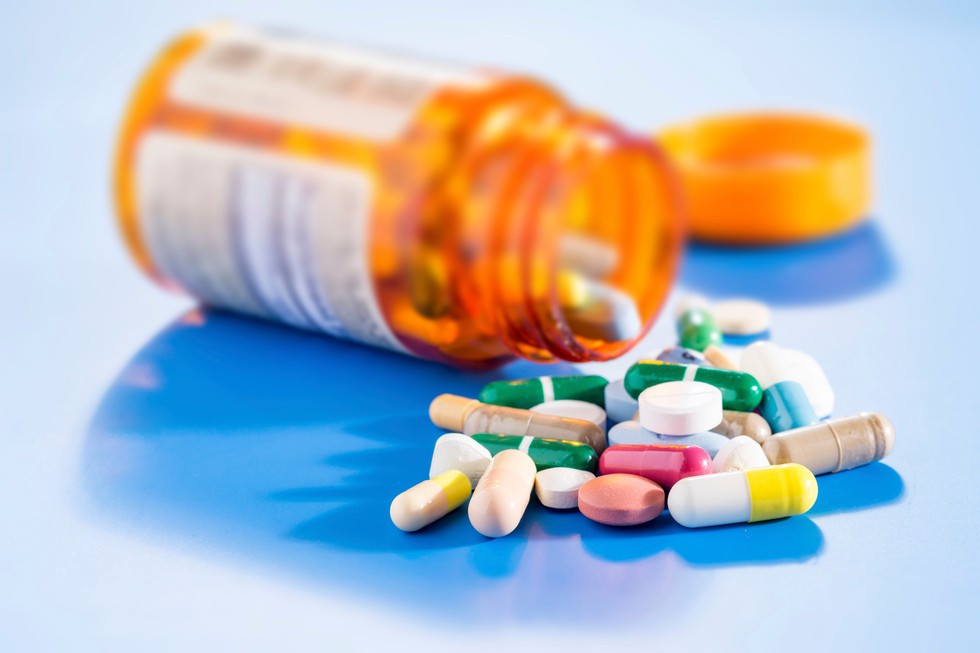
About:
- This was done by National Pharmaceutical Pricing Authority (NPPA) invoking extraordinary powers in public interest, under Para 19 of the Drugs (Prices Control) Order, 2013 to bring 42 non-scheduled anti-cancer drugs under price control through trade margin rationalisation.
- The NPPA currently fixes prices of drugs placed in the National List of Essential Medicines (NLEM) under Schedule-I of the DPCO.
- So far, around 1000 drugs have been brought under price control under the initiative. Non-scheduled drugs are allowed an increase of up to 10 per cent in prices every year, which is monitored by the NPPA.
- Currently, 57 anti-cancer drugs are under price control as scheduled formulations. Now 42 non-scheduled anti-cancer medicines have been selected for price regulation by restricting trade margin on the selling price (MRP) up to 30 %. These would cover 72 formulations and 355 brands as per data available with NPPA.
- The National Pharmaceutical Pricing Authority (NPPA) is a government regulatory agency that controls the prices of pharmaceutical drugs in India.
- Established in: 1997.
- Parent Body: Department of Pharmaceuticals, Ministry of Chemicals and Fertilizers.
Feb. 27, 2019
Prelims Pointers
Feb. 27, 2019
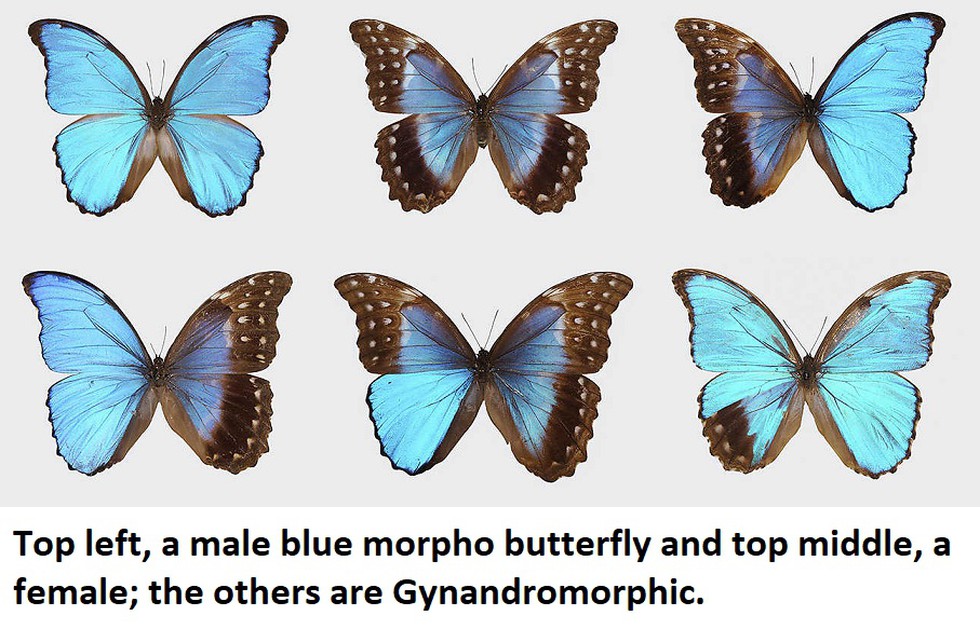
About:
- Meaning: Gynander or gynandromorphs are the organisms showing both female and male characteristics. The term is derived from the Greek words (gyne = woman; aner = man and morphe = form).
- Occurrence: These organisms are found in variety of species ranging from butterflies to chickens to lobsters but are most notable in butterflies, moths and other insects.
- Types: Depending upon the position of sex tissue, the gynanders may be of the following types:
- Bilateral Gynanders: Sometimes one half of the body shows female characters while other half shows male characters.
- Anterior-Posterior Gynanders: In such gynanders anterior region of the animal body has the characteristics of one sex and posterior half region has the characteristics of the other sex.
- Sex Piebalds: In these gynandromorphs the body consists of female tissue having spots of male tissue scattered irregularly.
- Bilateral Gynanders: Sometimes one half of the body shows female characters while other half shows male characters.
- Reasons: Gynandromorphs occur naturally, usually resulting from a random genetic error. How gynandromorphs are born at all still remains a mystery.
- Significance: According to researchers the study of gynandromorphs could offer clues as to why some human diseases strike one gender more than the other. Obesity, metabolic syndrome, autoimmune disease, Alzheimer’s, even ageing differs by sex.
Prelims Pointers
Feb. 27, 2019
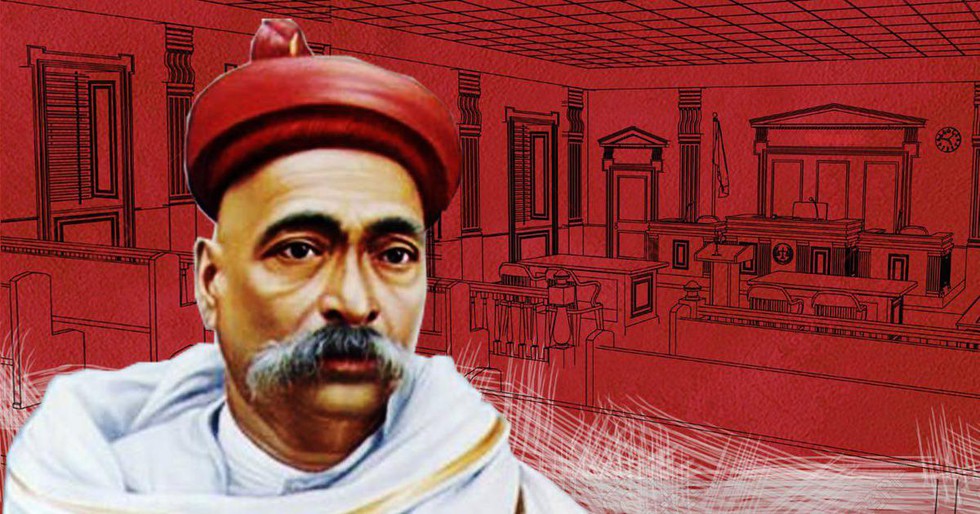
About:
- During the event he unveiled a unique Bhagwad Gita, prepared by ISKCON devotees. It measures over 2.8 meters and weighs over 800 kg.
- The Prime Minister recalled that Lokmanya Tilak had written the “Gita Rahasya,” while in jail, in which he explained in a simple way, Lord Krishna’s message of Nishkam Karma.
- He also mentioned that Mahatma Gandhi wrote “Bhagwad Gita according to Gandhi.” A copy of this book was given by him to the former US President, Barack Obama.
Prelims Pointers
Feb. 27, 2019
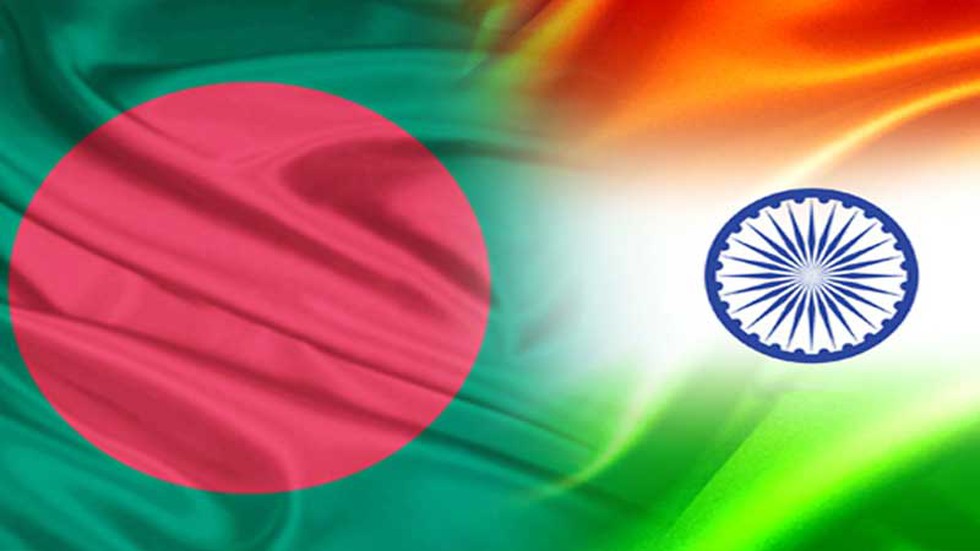
About:
- Exercise Sampriti-2019 is an important bilateral defence cooperation endeavour between India and Bangladesh to strengthen cooperation between the Indian and Bangladesh Armies in a counter insurgency and counter terrorism environment.
- This will be the eighth edition of the exercise which is hosted alternately by both countries.
Prelims Pointers
Feb. 27, 2019
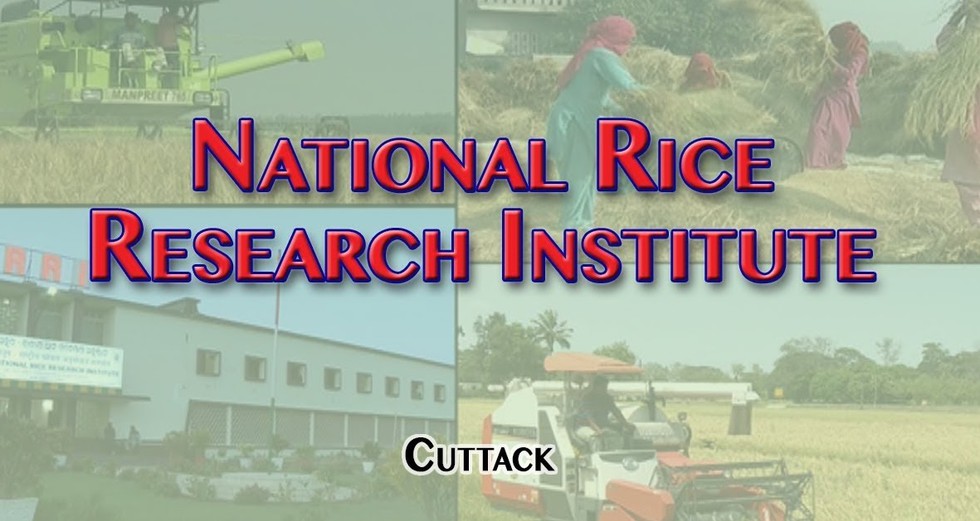
National Rice Research Institute (NRRI):
- Established in: 1946.
- Location: Cuttack, Odisha.
- Parent agency: It is under the administrative control of the Indian Council of Agricultural Research (ICAR).
- Working:
- The Institute has contributed immensely in country's Green Revolution and steered ground-breaking research in development of high-yield rice varieties thereby helping achieve self-sufficiency in rice production.
- NRRI is the nodal agency for planning, implementation and monitoring of Bringing Green Revolution in Eastern India (BGREI) programme which is being implemented in 118 districts of seven Eastern states.
- The Institute has contributed immensely in country's Green Revolution and steered ground-breaking research in development of high-yield rice varieties thereby helping achieve self-sufficiency in rice production.
Recent initiatives:
- Central Genomics and Quality Laboratory will help farmers in analyzing the quality of soil, water and produce.
- For the first time in the world, the Institute recently released two high-protein rice varieties (CR Dhan 310, CR Dhan 311) and two climate-smart varieties (CR Dhan 801 and CR Dhan 802), which are tolerant to both submergence and drought and can face the challenges of climate change.
- NRRI has developed Mobile App ‘riceXpert’ to provide information to farmers in real time besides facilitating the flow of information from scientist to farmers.
Prelims Pointers
Feb. 27, 2019

About:
- Union Minister announced Atal Jai Anusandhan Biotech Mission - Undertaking Nationally Relevant Technology Innovation (UNaTI), which is expected to transform Health, Agriculture and Energy sectors during the next 5 years.
- This mission includes –
- GARBH-ini - A Mission to promote Maternal and Child Health and develop prediction tools for pre-term berth,
- IndCEPI - A Mission to develop affordable vaccines for endemic diseases, Development of Biofortified and Protein Rich wheat - contributing to POSHAN Abhiyan,
- Mission on Anti-Microbial Resistance for Affordable Diagnostics and Therapeutics and
- Clean Energy Mission - Innovative Technology interventions for Swachh Bharat.
- GARBH-ini - A Mission to promote Maternal and Child Health and develop prediction tools for pre-term berth,
- He also gave away the Biotechnology Research Innovation and Technology Excellence (BRITE) awards.
Prelims Pointers
Feb. 27, 2019

About:
- The Delhi Declaration on digital health for sustainable development calls for WHO’s leadership in digital health and for it to establish a specific mechanism to centrally coordinate digital health to assist its Member States.
- The global intergovernmental meeting on digital health is being hosted by the Ministry of Health and Family Welfarein collaboration with World Health Organization (WHO) and the Global Digital Health Partnership (GDHP).
- The declaration marks India’s commitment in maximizing the digital health investments to ensure Universal Health Coverage (UHC) and realize Ayushman Bharat.
- This Delhi Declaration on digital health firmly aligns with Prime Minister Narendra Modi’s Digital India.
Global Digital Health Partnership (GDHP)?
- What is it? The Global Digital Health Partnership (GDHP) is a collaboration of governments and territories, government agencies and the World Health Organization, formed to support the effective implementation of digital health services.
- Background: Established in February 2018, Australia was the host country for the inaugural summit on February 19 and 20, 2018.
- Secretariat: The Australian Digital Health Agency is providing the secretariat services for the first eighteen months of the GDHP.
Prelims Pointers
Feb. 27, 2019
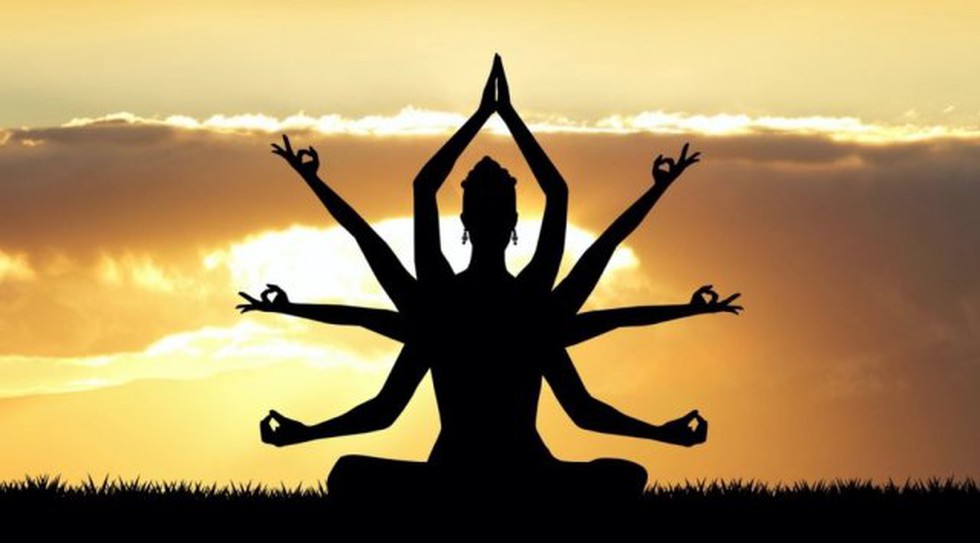
About:
- World Health organization (WHO) has launched Traditional Medicine Strategy 2014-2023 to help health care leaders to develop solution that contribute to a broader vision of improved health and patient autonomy.
- Goals: The strategy has two key goals –
- to support Member States in harnessing the potential contribution of Traditional and Complementary Medicine (T&CM) to health, wellness and people centered health care and
- to promote the safe and effective use of T&CM through the regulation of products, practice and practitioners.
- to support Member States in harnessing the potential contribution of Traditional and Complementary Medicine (T&CM) to health, wellness and people centered health care and
- Strategy: These goals will be reached by implementing three strategic objectives are 1) Building the knowledge base and formulating nation’s policies; 2) Strengthening safety, quality and effectiveness through regulation; and 3) Promoting universal health systems.
- Significance: Updating and enhancing the strategy has allowed WHO to acquire a better understanding of how to boost the global integration of T&CM into health systems. It will provide Member States with a road map to achieving further success in their T&CM strategic planning.
Benchmarks for Training in Yoga:
- Under this WHO Traditional Medicine Strategy 2014-2023, WHO is developing Benchmarks Document for Training in Yoga.
- For this a Project Collaboration Agreement (PCA) was signed between WHO and Ministry of AYUSH in 2016.
- This benchmarks document will be used in evaluating Yoga therapy, identifying trends in utilization, developing payment structures for service models, establishing regulatory framework for Yoga practice.
- A total of 16 yoga experts would be reviewing the draft document. Out of 16 experts, 11 international experts are from USA, UK, Canada, Brazil, Saudi Arabia, Sri Lanka, Thailand, Japan, Australia and Malaysia.
Prelims Pointers
Feb. 27, 2019
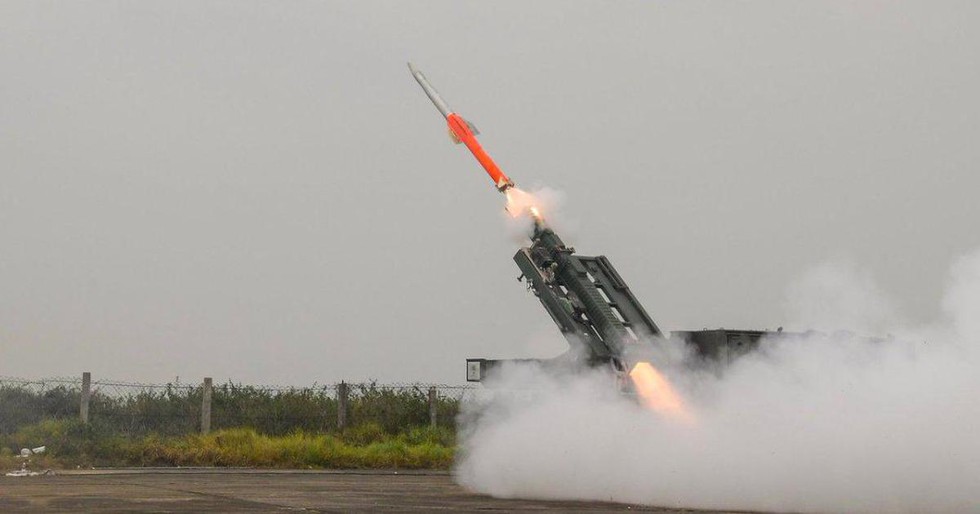
About:
- The missile, which has a strike range of about 30 km, is capable of killing multiple aerial targets, tanks and bunkers.
- The missile has been indigenously developed by Defence Research and Development Organisation (DRDO).
- The success came hours after the India Air Force launched strikes on terror camps in Pakistan's Balakot, eliminating "a very large number" of terrorists and their trainers.
Prelims Pointers
Feb. 27, 2019
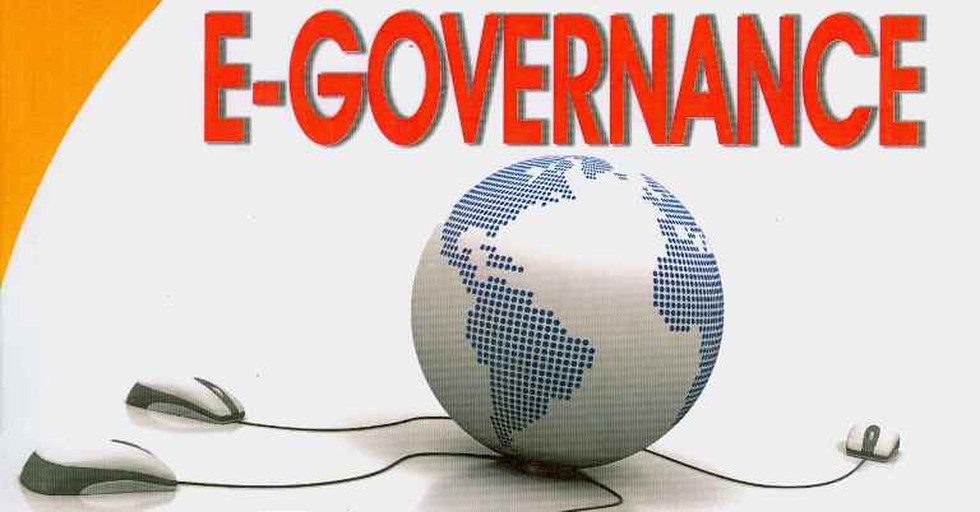
About:
- Presented by: Department of Administrative reforms & Public Grievances (DAR&PG) presents National Awards every year during National conference on e-Governance.
- Objective: To recognize and promote Excellence in implementation of e-Governance initiatives.
- Who are conferred the awards?
- The National e-Governance Award recognizes some of the best Government to Government (G to G), Government to Citizen (G to C), Government to Business (G to B) initiatives taken by government departments.
- It also recognizes initiatives in Start-ups, Academic Research Institutions as well as initiatives in adopting emerging technologies.
- The National e-Governance Award recognizes some of the best Government to Government (G to G), Government to Citizen (G to C), Government to Business (G to B) initiatives taken by government departments.
- Categories: The six categories under which Awards will be presented are as follows –
- Excellence in Government Process Re-engineering for Digital Transformation.
- Excellence in providing Citizen-Centric Delivery.
- Excellence in District level Initiative in e-Governance (i) North-East States + Hilly States (ii) UTs (including Delhi) (iii) Other States.
- Outstanding research on Citizen Centric Services by Academic/Research Institutions.
- Innovative Use of ICT in e-Governance solutions by Start-ups [Start up as defined by Department of Industrial Policy and Promotion (DIPP) Government of India].
- Excellence in Adopting Emerging Technologies.
- Excellence in Government Process Re-engineering for Digital Transformation.
Prelims Pointers
Feb. 27, 2019
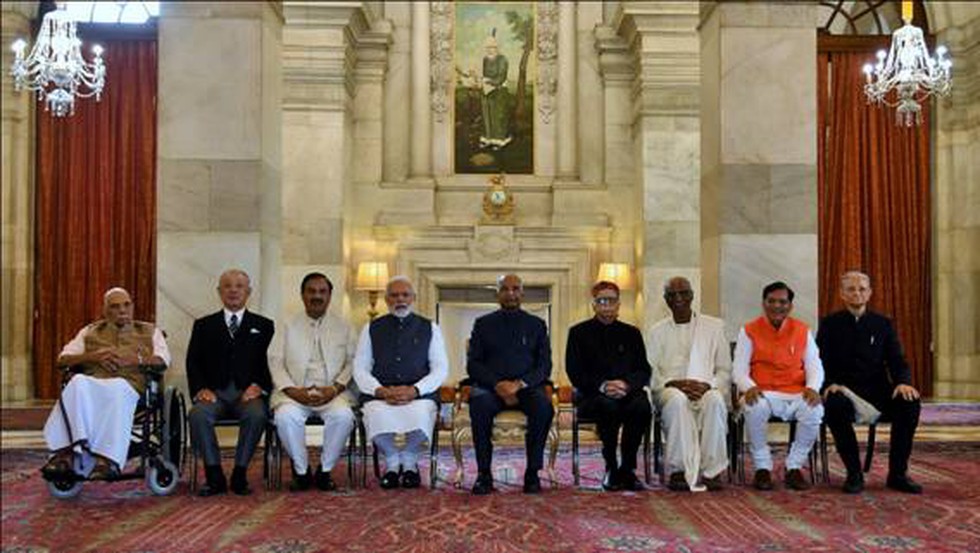
About:
- Full name of the award: Gandhi Peace Prize for Social, Economic and Political transformation through Non-violence was instituted in the year 1995.
- Criteria:
- This annual award is given to individuals or organizations who have worked selflessly for peace, non-violence and amelioration of human sufferings particularly of the less-privileged section of society contributing towards social justice and harmony.
- The Award is open to all persons regardless of nationality, race, language, caste, creed or gender.
- This annual award is given to individuals or organizations who have worked selflessly for peace, non-violence and amelioration of human sufferings particularly of the less-privileged section of society contributing towards social justice and harmony.
- Background: The annual award was instituted by the Government of India in 1995 during the commemoration of 125th Birth anniversary of Mahatma Gandhi.
- Cash prize: The award carries an amount of Rs 1 Crore as well as an exquisite traditional handicraft/handloom item.
- Jury: The names of awardees were chosen by a jury headed by Prime Minister Narendra Modi.
List of recipients of The Gandhi Peace Prize for the years 2015, 2016, 2017 and 2018 –
- 2015: Vivekananda Kendra, Kanyakumari for their contribution in Rural Development, Education, Development of natural resources.
- 2016: Jointly to –
- Akshaya Patra Foundation for providing mid-day meals to millions of children across India and
- Sulabh International for improving the condition of sanitation in India.
- 2017: Ekal Abhiyan Trust, for providing Education for Rural and Tribal Children in remote areas and for Gender and Social Equality.
- 2018: Yohei Sasakawa, WHO Goodwill ambassador, for his contribution in Leprosy Eradication across the world.
Feb. 26, 2019
Prelims Pointers
Feb. 26, 2019

About:
- Present status: The marginal cost of fund based lending rate (MCLR) is currently the benchmark for all loan rates. Banks typically add a spread to the MCLR while pricing loans for homes and automobiles.
- Decision by RBI:
- The Reserve Bank of India (RBI) had asked the banks to move to an external benchmark for loan pricing from April 1.
- For the new benchmark, the spread over the benchmark rate — to be decided by banks at the inception of the loan — should remain unchanged through the life of the loan, unless the borrower’s credit assessment undergoes a substantial change and as agreed upon in the loan contract.
- RBI is expected to issue the final guidelines on the matter in March.
- The Reserve Bank of India (RBI) had asked the banks to move to an external benchmark for loan pricing from April 1.
- Options given: Banks had four options from which to choose the external benchmark -
- the repo rate,
- the 91-day treasury bill,
- the 182-day T-bill or
- any other benchmark interest rate produced by the Financial Benchmarks India Private Ltd (FBIL).
- the repo rate,
- Significance: The move is expected to improve monetary transmission as lenders had, in the past, been found reluctant to reduce lending rate.
Financial Benchmark India Private Ltd (FBIL)?
- Financial benchmarking is estimating and producing standard market rates for leading financial indicator like interest rate, foreign exchange rate, pricing of government securities etc.
- Financial Benchmark India Private Ltd (FBIL) was jointly promoted by Fixed Income Money Market & Derivative Association of India (FIMMDA), Foreign Exchange Dealers’ Association of India (FEDAI) and Indian Banks’ ‘Association (IBA).
- It was incorporated In 2014 under the Companies Act 2013. It was recognised by Reserve bank of India as an independent Benchmark administrator in 2015.
- The main objective of the company is to act as the administrators of the Indian interest rate and foreign exchange benchmarks and to introduce and implement policies and procedures to handle the benchmarks.
Prelims Pointers
Feb. 26, 2019
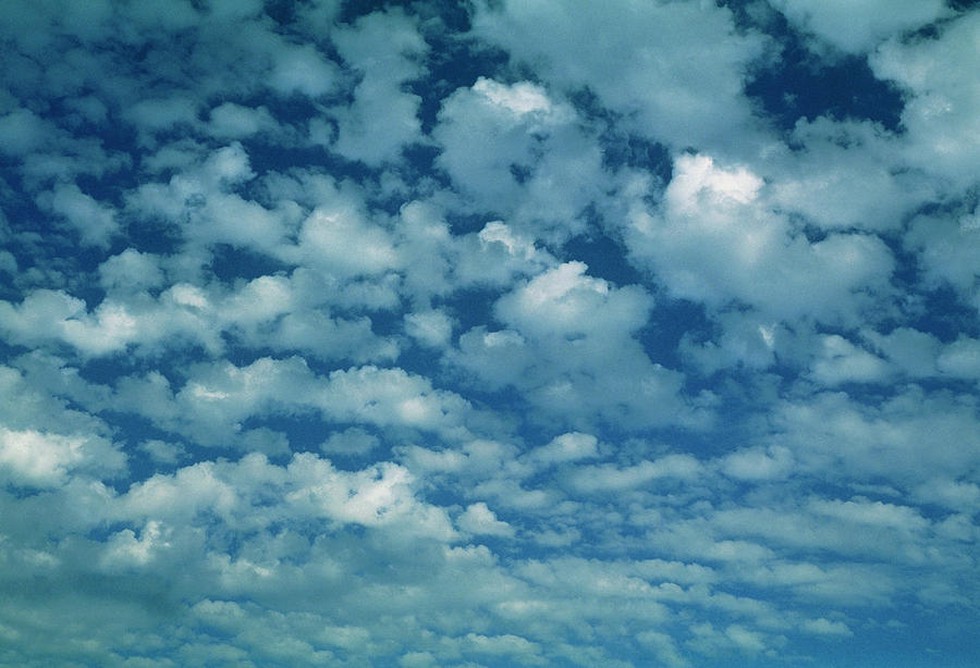
About:
- Stratocumulus cloud consists of large, rounded masses of stratus that form groups, lines or waves. They usually have gaps between them, but they can also be joined together.
- These low-level clumps or patches of cloud varying in colour from bright white to dark grey.
- Formation:
- Stratocumulus clouds usually form from a layer of stratus cloud breaking up. They are indicators of a change in the weather and are usually present near a warm, cold or occluded front.
- Stratocumulus clouds cover about 20 percent of subtropical oceans, mostly near western seaboards such as the coasts of California, Mexico and Peru.
- Stratocumulus clouds usually form from a layer of stratus cloud breaking up. They are indicators of a change in the weather and are usually present near a warm, cold or occluded front.
- Weather conditions associated: Stratocumulus clouds can be present in all types of weather conditions, from dry settled weather to more rainy conditions. Stratocumulus are often mistaken for rain clouds, when in reality it is quite rare to get anything more than the lightest drizzle from them, if anything at all.
- Types: Stratocumulus clouds are grouped into four different 'species' -
- Stratocumulus stratiformis - These are essentially flat based layers of cloud often with a few cracks between.
- Stratocumulus cumulogenitus - These form when rising cumulus clouds encounter a temperature inversion and spread outwards clumping together.
- Stratocumulus castellanus - These are thicker, more drizzly stratocumulus clouds.
- Stratocumulus lenticularis - Very different in appearance to the more spectacular altocumulus lenticularis, they form when hills produce atmospheric waves, which contribute to their lens-like shape.
- Stratocumulus stratiformis - These are essentially flat based layers of cloud often with a few cracks between.
Prelims Pointers
Feb. 26, 2019
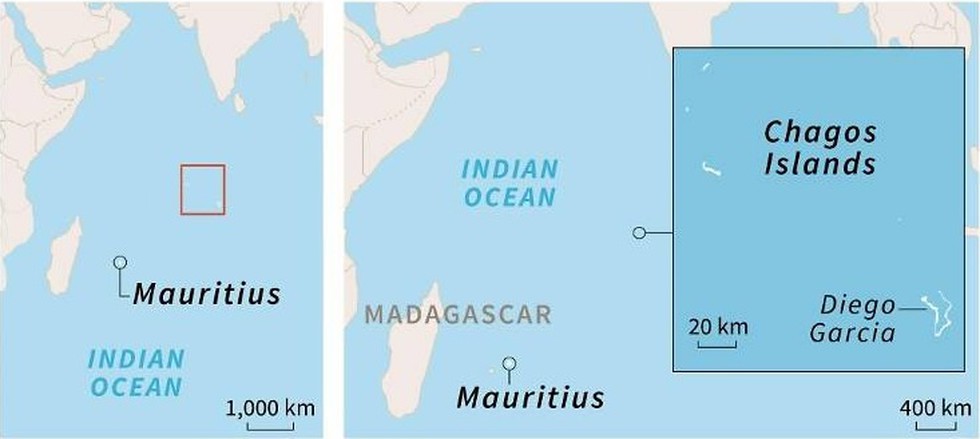
About:
- The Chagos Archipelago is a group of seven atolls comprising more than 60 individual tropical islands in the Indian Ocean.
- It is officially part of the British Indian Ocean Territory.
Timeline of dispute:
- Chagos Archipelago has been part of Mauritius since at least the 18th century when France governed it.
- In 1810, Mauritius was captured by the United Kingdom and France ceded the territory in the Treaty of Paris.
- In 1965, three years before Mauritius got its independence, Britain separated the Chagos islands to carve out a ‘British Indian Ocean Territory’.
- In 1966, the UK leased Diego Garcia (the biggest island in the Chagos archipelago) to the US to create an air & naval base. For constructing the defence installation, the inhabitants of the island were forcibly removed.
- In 1968 Mauritius was granted independence.
- In June 2017, the UN General Assembly adopted a resolution calling on the ICJ to delivery an advisory opinion on whether the continued administration of the Chagos Archipelago by the United Kingdom following the 1968 decolonisation process of Mauritius was lawful.
Recent development:
- Delivering the opinion, ICJ rejected the contention that the issue did not fall within its jurisdiction because it was a bilateral matter for the two countries.
- It concluded that the decolonisation of Mauritius was not lawfully completed, as a result of Britain’s continued administration of the Chagos Islands.
- The continued administration of the territory by the U.K. amounted to a “wrongful act”, which was not consistent with the right to the people of “self determination.
Way ahead:
- The ICJ can also deliver advisory opinions. Although not binding, though they do carry substantial legal weight and are mostly adhered to. However, there have been several occasions in which they have not been: such as the 2003 advisory opinion which obligated Israel to stop building the wall in the occupied Palestinian territory.
- The advisory opinion is a significant legal victory for Mauritius and other nations, including India, that supported its case.
- The advisory opinion is unlikely to impact the U.S. military base (even assuming Britain acted on the advisory opinion) as Mauritius is committed to the continued operation of the base in Diego Garcia under a long-term framework.
- The case is seen as having far wider ramifications as it deals with the legacy of colonialism.
Prelims Pointers
Feb. 26, 2019
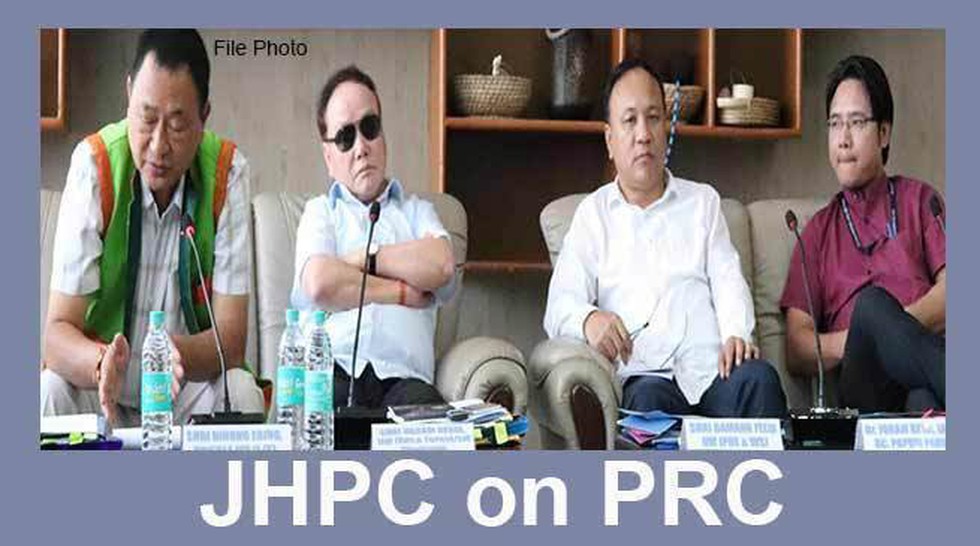
About:
- What is PRC? It is a legal document issued to Indian citizens that serves as evidence of residence and is required to be submitted as residential proof for official purpose.
- Recent proposal:
- The Arunachal Pradesh government is considering issuing the certificate to the six non-APSTs communities who are not natives of AP but have been living in Namsai and Changlang districts for decades and to the Gorkhas living in Vijaynagar.
- Amongst those communities are Deoris, Sonowal Kacharis, Morans, Adivasis and Mishings. Most of these communities are recognised as Scheduled Tribes in neighbouring Assam.
- This is being done on the basis of recommendations made by the Nabam Rebia-led Joint High Power Committee (JHPC).
- The Arunachal Pradesh government is considering issuing the certificate to the six non-APSTs communities who are not natives of AP but have been living in Namsai and Changlang districts for decades and to the Gorkhas living in Vijaynagar.
- Protests:
- There is resentment among several community-based groups and organisations in AP, who feel the rights and interests of indigenous people will be compromised if the proposal is implemented.
- Two people were killed and several injured in protests over the proposal.
- There is resentment among several community-based groups and organisations in AP, who feel the rights and interests of indigenous people will be compromised if the proposal is implemented.
Prelims Pointers
Feb. 26, 2019
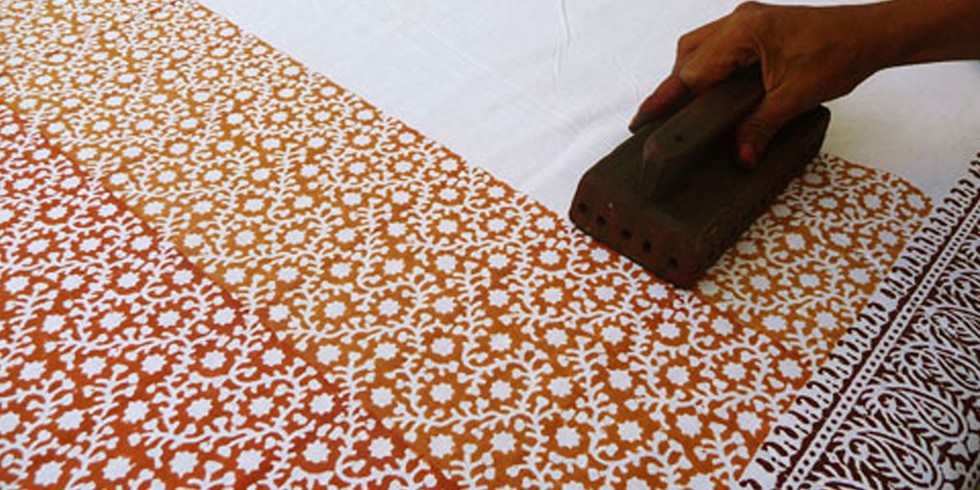
About:
- Bagru is a town situated 30km away from the city of Jaipur.
- Bagru is well known for its handblock printing using natural dyes & techniques. This technique of hand block printing is believed to be started by the God of Chippa community “Sant Siromani Shri Namdevji Maharaj”.
- The Chippa’s are referred to the caste of the block printers. The traditional fabric printing and dyeing arts of Rajasthan like Bandhej, Bagru, leheriya, etc. still remain synonymous with the community.
- This tradition of printing is as old as 350 years.
- Traditional hand prints include the Dabu resist, farad printing, and the commonly used Bagru print, which is characterized by the use of harda, a mordant, Shahi and beger, natural paints, boiling to fix the dyes, and of course drying in the sun to insure fixed colors.
Hand block printing is a centuries old Indian art form that utilizes a hand carved teak wood block that is dipped in dye and stamped by hand onto cotton or silk. The design for the block is usually a traditional Indian motif. The motif is traced onto a block by a master craftsman who then chips away at the block to create a stamp.
Prelims Pointers
Feb. 26, 2019
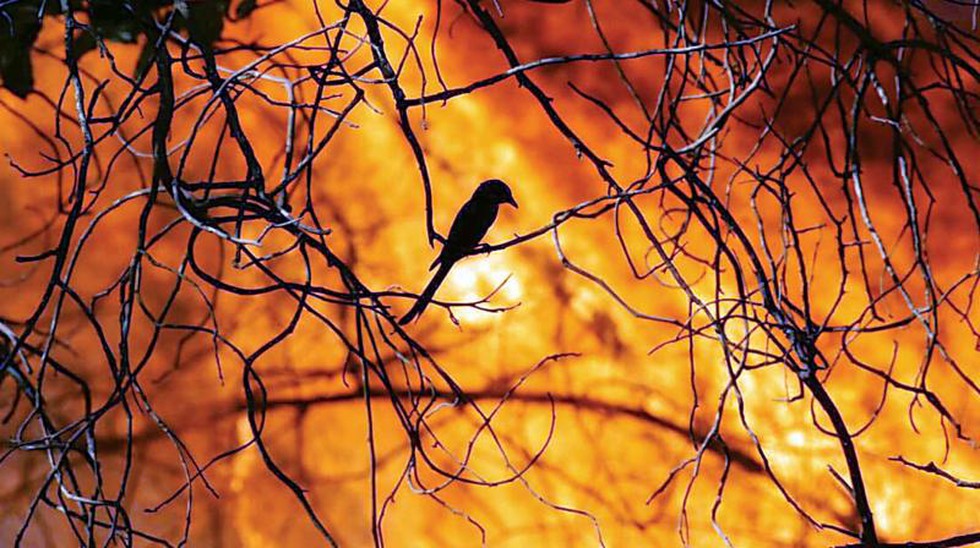
About:
- Status: In 1974, Bandipur Tiger reserve was established as one of the first 9 Tiger Reserves under Project Tiger. In 1985, by including adjacent areas, it was enlarged and named as Bandipur National Park.
- Location: Tiger Reserve is situated in two contiguous districts (Mysore and Chamarajanagar) of Karnataka. It is located at the tri-junction area of the States of Karnataka, Tamil Nadu and Kerala.
- Bandipur Tiger Reserve is surrounded by -
- Nagarahole Tiger Reserve (Karnataka) in the North West (Kabini Reservoir separates the two)
- Mudumalai Tiger Reserve (Tamil Nadu) in the South and
- Wayanad Wildlife Sanctuary (Kerala) in the South West.
- Nagarahole Tiger Reserve (Karnataka) in the North West (Kabini Reservoir separates the two)
- Together these 4 areas are part of the Nilgiri Biosphere Reserve.
- Rivers: The park is situated between Kabini riverin the north and the Moyar river in the south. The Nugu river runs through the park.
Reasons for Forest Fire:
- Often forest fires are due to natural reasons like
- Lightening that sets trees on fire.
- High temperature and low humidity which create favourable condition for the fire.
- High velocity winds may result in friction of bamboos and rolling of stones which can generates spark leading to fire in the leaf litter on the ground.
- But they are also caused due to human involvement. Some of which are
- Deliberate fire by locals to encroach the forest lands or to renew pasture or to regain agricultural land.
- Shifting cultivation and fire started by locals to keep away wild animals also sometimes result in forest fire.
- Fire is also started by poachers and smugglers to destroy the evidence of their illegal activities.
- Forest fire is also started and spread when smouldering fire is not stamped properly by campers.
- Smoking or carrying naked flame in the forest, electric spark from devices also causes forest fire.
Prelims Pointers
Feb. 26, 2019

Key winners of the 91st Academy Awards (Oscars):
- Best Picture: Green Book. The movie is about the story of an unlikely friendship across racial divides. It is backed by Anil Ambani-owned Reliance Entertainment's Amblin Entertainment.
- Best Director: Filmmaker Alfonso Cuaron (for his movie 'Roma', a film about a housekeeper in a middle-class family in the 1970s).
- Best Actress: Olivia Colman (for her potrayal of Queen Anne in the movie "The Favourite").
- Best Actor: Rami Malek (for his potrayal of Queen musician Freddie Mercury in the movie "Bohemian Rhapsody").
- Best Original Song: Lady Gaga (for "Shallow" from her feature debut "A Star is Born").
- Guneet Monga is an Indian film producer and the founder of Sikhya Entertainment, a film production house that produced notable films like Gangs of Wasseypur - Part 1, Peddlers and The Lunchbox, Masaan, and Zubaan. Monga's 2018 production Period. End of Sentence. won the Academy Award for Best Documentary Short Subject.
- The Academy Awards, also known as the Oscars, are a set of awards given annually by The Academy of Motion Picture Arts and Sciences.
- The Academy was organized in May 1927 as a non-profit organization dedicated to the advancement and improvement of the film industry.
- The awards were first presented in 1929.
Prelims Pointers
Feb. 26, 2019
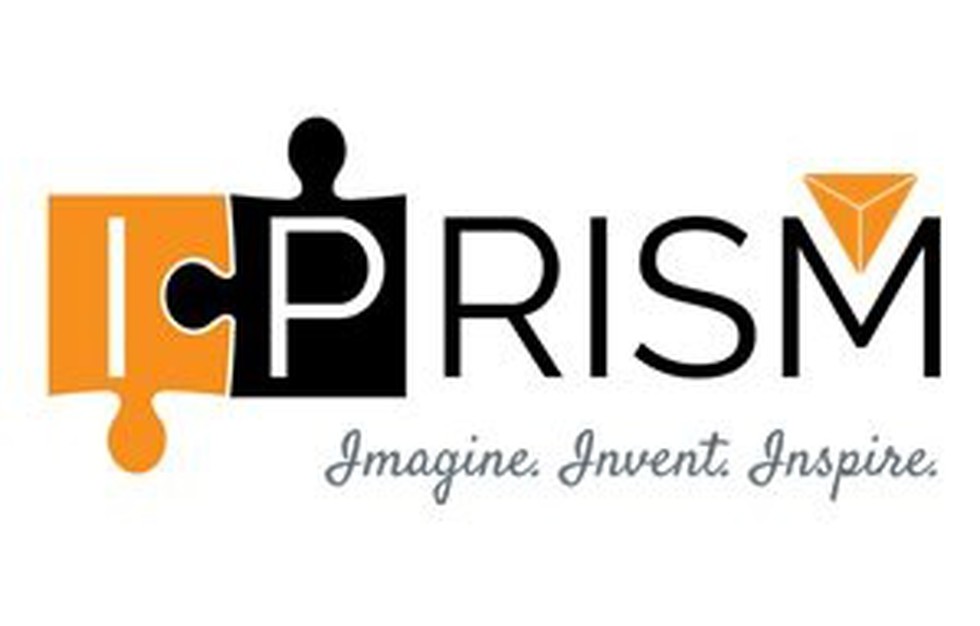
About:
- What is it? IPrism is an Intellectual Property (IP) competition for students of schools, polytechnic institutes, colleges and universities.
- Objective: To foster a culture of innovation and creativity in the younger generation; To provide young creators an opportunity to see their creations recognized on a national platform.
- Highlights of second edition:
- This year, entries are invited on “IP in Daily Life”in two categories – film making and comic book making. The last date for receiving entries is May 30, 2019.
- The film making competition will accept entries of 60 second long animated/film videos, while the comic book making encourages participants to narrate a story in comic strips under 5 pages.
- Cash prizes worth more than Rs. 2 lakh will be given to the winning teams.
- This year, entries are invited on “IP in Daily Life”in two categories – film making and comic book making. The last date for receiving entries is May 30, 2019.
The National IPR Policy was adopted in 2016, to create a vibrant IP ecosystem in the country. Creating IPR Awareness through outreach and promotional activities is a key objective of the Policy.
The Cell for IPR Promotion and Management (CIPAM), set up under the aegis of the Department for Promotion of Industry and Internal Trade, to fulfil the policy objectives, has been actively involved in many outreach activities including a nation-wide IPR awareness campaign.
Prelims Pointers
Feb. 26, 2019
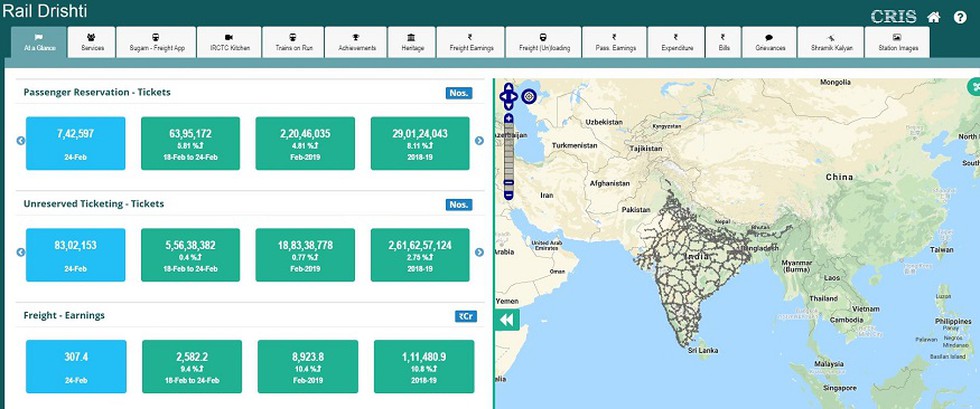
About:
- It brings information from various sources on a single platform and gives access to key statistics and parameters to every citizen of the country.
- It gives information on 4 main parameters of Indian Railways. This includes Passenger Reservation, Unreserved Ticketing, Freight Earnings and Freight Loading. The available information has been categorized under 15 user friendly sections on the Dashboard.
- This dashboard can be accessed using a desktop/laptop or a mobile device such as a phone or tablet. The url of the dashboard is “raildrishti.cris.org.in”.
Prelims Pointers
Feb. 26, 2019
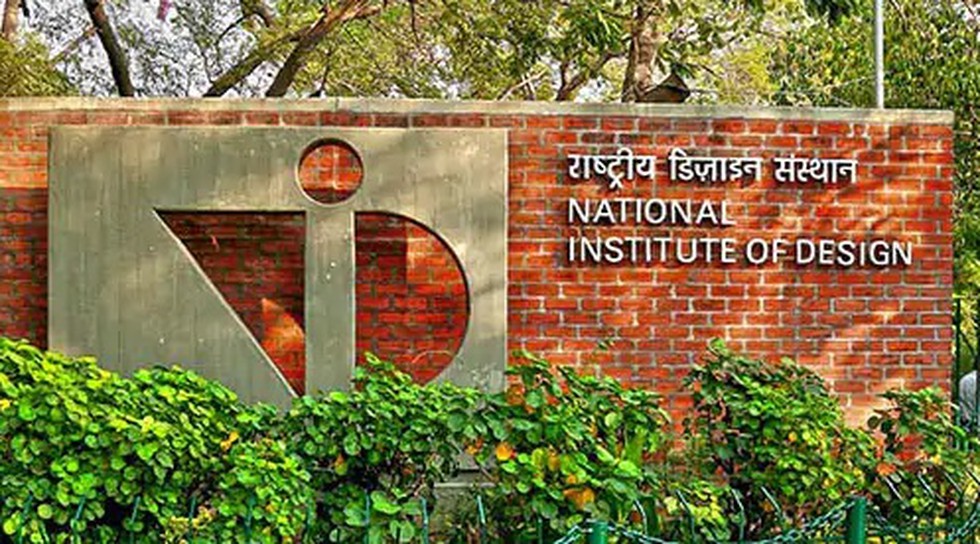
About:
- Both institutes are autonomous institutions under Department for Promotion of Industry and Internal Trade (DPIIT), Ministry of Commerce and Industry.
- The National Design Policy 2007 had recommended setting up design institutes on the lines of NID, Ahmedabad in other parts of India to promote design programs.
- Four new NIDs have been set up in Andhra Pradesh (Amaravati), Assam (Jorhat), Madhya Pradesh (Bhopal) and Haryana (Kurukshetra) with a total outlay of Rs. 434 crore.
- Establishing new NIDs in different regions of the country will help produce highly skilled manpower in design.
Feb. 25, 2019
Prelims Pointers
Feb. 25, 2019

About:
- Objective:
- This aerial surveillance system is being developed primarily for monitoring suspicious movements in areas with dense tree cover along the border.
- The technology can also be deployed in agriculture for monitoring drought, disease and nutrient stress or identifying soil moisture.
- This aerial surveillance system is being developed primarily for monitoring suspicious movements in areas with dense tree cover along the border.
- Working:
- It will track unwanted human presence, their numbers and locations with optical and infrared sensors. It can detect human presence from air even if there a cloud cover, dense fog or snow cover.
- The data will be analysed with deep learning algorithms and immediately relayed to security forces.
- It will track unwanted human presence, their numbers and locations with optical and infrared sensors. It can detect human presence from air even if there a cloud cover, dense fog or snow cover.
- Who is building it? IAF has roped in former NASA scientist Kumar Krishen as the chief technologist.
- Cost: 13 crore.
- Time frame: Within 2 years.
‘Hyspectral’ imaging (Hyperspex) is said to enable distinct identification of objects, materials or processes on Earth by reading the spectrum for each pixel of a scene from space.
Prelims Pointers
Feb. 25, 2019
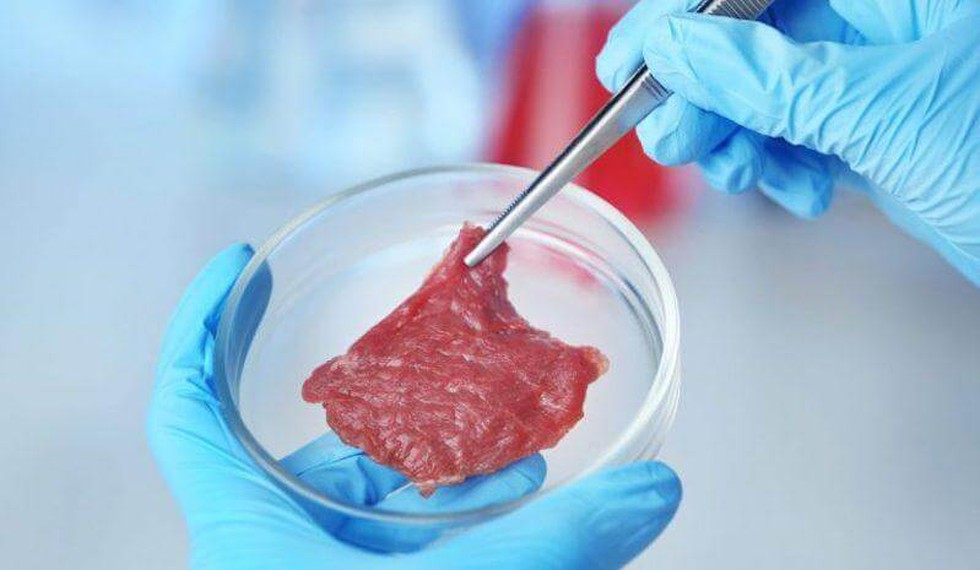
About:
- GFI India is looking for ₹50 crore-worth of funding to set up a lab at ICT by the end of 2019, and also build a greenfield facility for the research centre in the next two years. By early 2020, it expects to begin offering taste tests of meat grown in the lab from samples of animal tissue.
- Timeline:
- Churchill’s prediction: “We shall escape the absurdity of growing a whole chicken in order to eat the breast or wing, by growing these parts separately under a suitable medium,” wrote Churchill, in his 1931 essay Fifty Years Hence.
- The first government-funded research on this kind of lab-grown meat began in the Netherlands in 2005, and culminated in 2013, when the first cell-cultured hamburger was cooked and tasted live in London.
- Mark Post, the Dutch pharmacologist behind the development of that burger, went on to co-found a company named Mosa Meat to develop commercial production methods to bring cell-based meat to the dining table at more affordable prices.
- Churchill’s prediction: “We shall escape the absurdity of growing a whole chicken in order to eat the breast or wing, by growing these parts separately under a suitable medium,” wrote Churchill, in his 1931 essay Fifty Years Hence.
Analysis:
- Benefits:
- The meat is slaughter-free and aims to bypass the problems of modern factory-farming, whether the objections of cruelty to animals, infections of salmonella and e coli, or meat injected with multiple doses of antibiotics.
- Environmentally, it’s a far more efficient production process when it comes to land use and water use.
- The research centre can create products not only for the ₹20,000-crore Indian meat sector, but also the trillion-dollar international market.
- The meat is slaughter-free and aims to bypass the problems of modern factory-farming, whether the objections of cruelty to animals, infections of salmonella and e coli, or meat injected with multiple doses of antibiotics.
- Challenges:
- The science is still a work in progress, especially the effort to find a suitable serum and a cell culture medium which are stable, standardised and not dependent on live animal products.
- There needs to be a regulatory framework in place to test, regulate and label such foods. Initial discussions have been held with the Food Safety and Standards Authority of India.
- The science is still a work in progress, especially the effort to find a suitable serum and a cell culture medium which are stable, standardised and not dependent on live animal products.
Institute of Chemical Technology (ICT), Mumbai?
- Location: Institute of Chemical Technology (ICT) is a chemical technology research state university located in Mumbai. The institute also has campuses at Jalna, Marathwada and Bhubaneshwar.
- Established in: 1933.
- Mandate: Training and research in various branches of chemical engineering, chemical technology, and pharmacy.
- Status:
- It was granted deemed university status in 2008.
- It is also an institute with a special status as mentioned in SECTION IV of the Report of the Empowered Expert Committee in 2018.
Prelims Pointers
Feb. 25, 2019

About:
- The Criminal Law Act, 2018, provides for a national registry of sexual offenders.
- It is a central database of “sexual offenders” in the country which will assist in effectively tracking and investigating cases of sexual offences.
- It will be maintained by the National Crime Records Bureau (NCRB) and is accessible only to the law enforcement agencies (like state police) for investigation and monitoring purpose.
- The database will include offenders convicted under charges of rape, gang rape, POCSO and eve teasing. At present the database contains 4.4 lakh entries.
- The database includes name, address, photograph and fingerprint details for each entry without compromising any individual’s privacy.
- The data will be stored for (a) 15 years for those posing low danger, (b) 25 years for those posing moderate danger and (c) lifetime for habitual offenders involved in violent crimes like gang-rapes.
- U.S., U.K., Canada, Australia, South Africa and Trinidad &Tobago are some of the other countries having similar databases.
Crime against women: Statistics
- According to the NCRB, 38,947 rape cases were registered in 2016, as against 34,651 in 2015.
- In 2016, Madhya Pradesh reported the highest number of rape cases at 4,882 followed by Uttar Pradesh (4,816) and Maharashtra (4,189).
- Overall crimes against women rose from 3,29,243 in 2015 to 3,38,954 in 2016.
- A majority of cases in 2016 categorised as crimes against women were reported under cruelty by husband or his relatives (32.6%), followed by assault on woman with intent to outrage her modesty (25%), kidnapping and abduction of women (19%), and rape (11.5%).
- The NCRB reports on crimes in 2017 and 2018 are yet to be published.
Prelims Pointers
Feb. 25, 2019
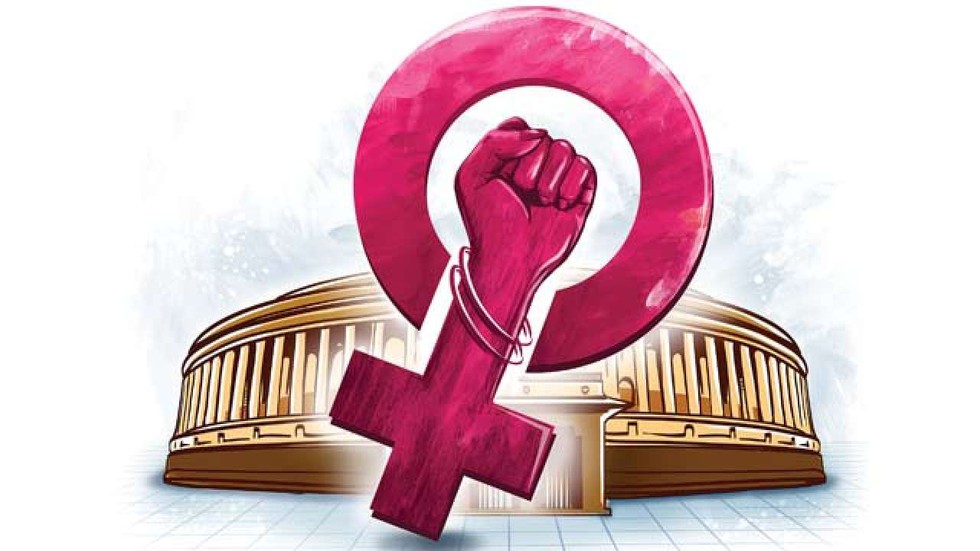
Women’s reservation in Legislatures (India):
- According to UN Women, the real, transformative progress can only be achieved if women are equal partners in decision making.
- In November 2018, the Odisha Assembly passed a resolution for providing 33% reservation for women in Legislative Assemblies and Parliament.
- The resolution chief minister’s move came at a time when the Women’s Reservation Bill or the Constitution (108th amendment) Bill is pending before the parliament. The Rajya Sabha had passed the bill in 2010.
- Of the 543 legislators elected in the 2014 general elections, only 62 were women, according to PRS Legislative. This is marginally higher than the 58 women who were elected to the 15th Lok Sabha in 2009.
The United Nations Entity for Gender Equality and the Empowerment of Women (UN Women):
- Type of body: UN Women, is a United Nations entity working for the empowerment of women. It is a member of the United Nations Development Group.
- Background: It was formed in July 2010 and became operational in January 2011.
- UN Women is empowered to:
- support intergovernmental bodies in their formulation of policies, global standards, and norms,
- help UN member states implement the above standards and
- enable member states to hold the UN system accountable for its own commitments on gender equality.
- Flagship reports: UN Women’s Policy and Programme Division produces a number of publications, including two major flagships –
- Progress of the World’s Women: It frames key gender and women’s rights issues for policymakers, women’s rights advocates and researchers. There have been seven editions of Progress since 2000.
- World Survey on the Role of Women in Development: It comes out every five years and is presented to the Second Committee of the United Nations General Assembly, which deals with economic and financial issues.
Prelims Pointers
Feb. 25, 2019
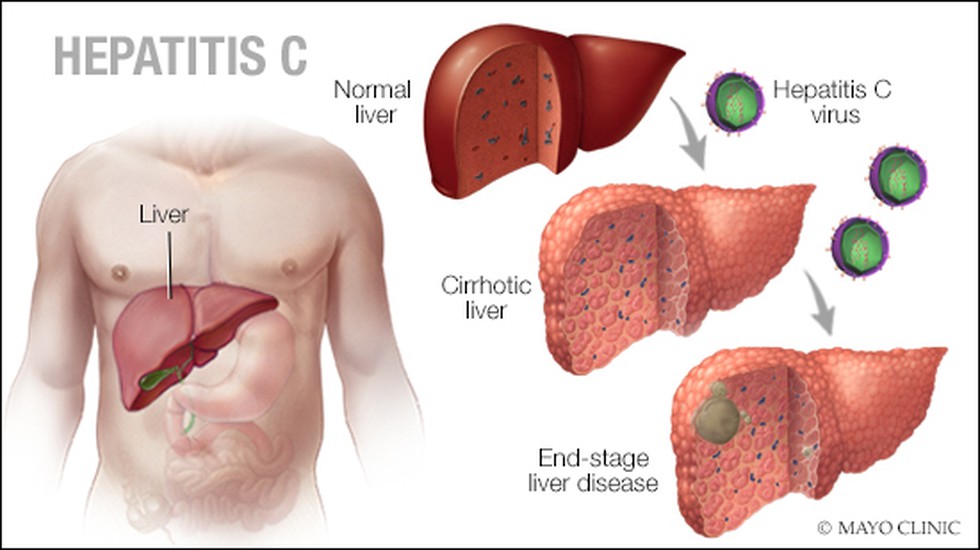
About:
- Hepatitis is an inflammation of the liver. The condition can be self-limiting or can progress to fibrosis (scarring), cirrhosis or liver cancer.
- Cause: Hepatitis viruses are the most common cause, but other infections, toxic substances (e.g. alcohol, certain drugs), and autoimmune diseases can also cause it.
- Five main types of hepatitis viruses: A, B, C, D and E. While all cause liver disease, they vary in important ways.
- Hepatitis A and E are typically caused by ingestion of contaminated food or water (transmitted via oral-faecal route).
- Hepatitis B, C and D are transmitted through unsafe blood transfusions or contaminated needles/syringes (particularly among the drug users), sexual-transmission or even mother-to-child transmission. There is no vaccine for Hepatitis C.
- Hepatitis A and E are typically caused by ingestion of contaminated food or water (transmitted via oral-faecal route).
- Global status: According to WHO estimates, viral hepatitis caused 1.34 million deaths globally in 2015, a number comparable to deaths due to tuberculosis, worldwide. In India, around 4 crore people suffering from Hepatitis B and 0.6-1.2 crore people suffering from Hepatitis C.
STEPS BY GOVERNMENT of INDIA TO TACKLE IT:
- Inclusion of Hepatitis B vaccination under the expanded Universal Immunization Programme.
- Launching of the National Viral Hepatitis Control Programme in July 2018 under National Health Mission by the Health Ministry. The aim of the programme is to combat hepatitis and achieve countrywide elimination of Hepatitis C by 2030.
- Launching of Swacch Bharat Abhiyan and safe drinking water.
ELIMINATION TARGET:
- At the 69th World Health Assembly (Geneva), 194 governments adopted WHO’s first Global Health Sector Strategy on Viral Hepatitis (2016-2021) with a goal of eliminating hepatitis B and C in the next 13 years. The community responded by launching ‘NOhep’ – the first ever global movement to eliminate viral hepatitis by 2030.
- The Sustainable Development Goal 3 – target 3 (SDG 3.3) calls for a specific action to combat viral hepatitis and water-borne/other communicable diseases.
Prelims Pointers
Feb. 25, 2019
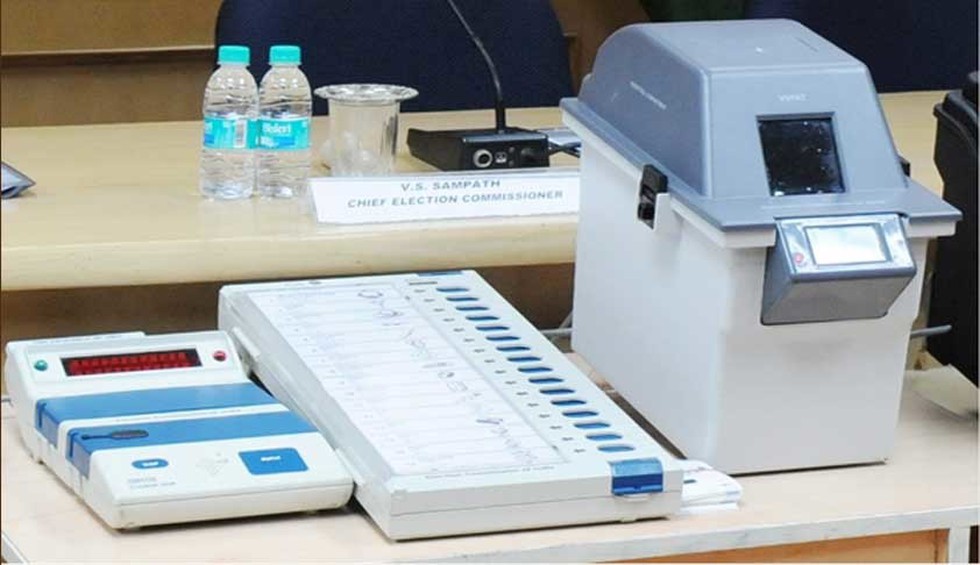
About:
- The Commission was hearing the appeal of an RTI applicant who had asked the Election Commission for an EVM but was denied.
- The CIC ruled that “the EVM which is available with the ECI in a material form and also as samples is an information under the RTI Act.”
- The definition of information under Section 2(f) of the RTI Act includes “any material in any form, including records, documents, memos, e-mails, opinions, advices, press releases, circulars, orders, logbooks, contracts, reports, papers, samples, models, data material held in any electronic form…”
- The CIC upheld applicant Razaak K. Haidar’s contention that the terms “models” and “samples” should apply to an EVM.
Counter arguments by ECI:
- ECI Under-Secretary Soumyajit Ghosh admitted that “models/samples of EVM are available with the ECI, but they are only kept for training purpose and not saleable to the general public.”
- He also argued that the information was exempted from disclosure under Section 8(1)(d) of the RTI Act as “the software installed in the machines is an intellectual property of a third party, the disclosure of which would harm the competitive position of the third party concerned.”
- Way ahead: CIC directed the ECI to file an appropriate response to the appellant within four weeks.
Prelims Pointers
Feb. 25, 2019
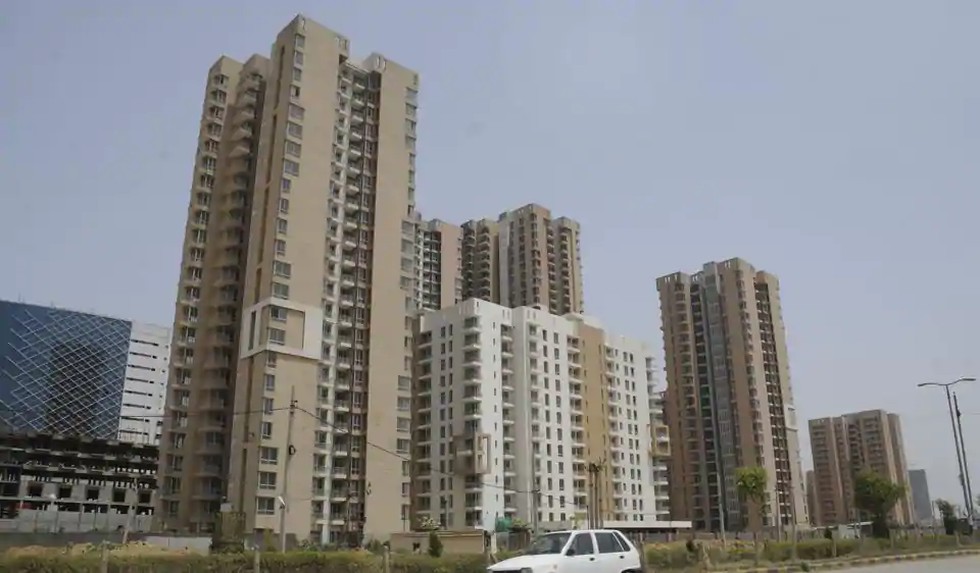
Recommendations made:
- GST rate:
- GST shall be levied at effective GST rate of 5% without Input Tax Credit (ITC) on residential properties outside affordable segment;
- GST shall be levied at effective GST of 1% without ITC on affordable housing properties.
- GST shall be levied at effective GST rate of 5% without Input Tax Credit (ITC) on residential properties outside affordable segment;
- Effective date: The new rate shall become applicable from 1st of April, 2019.
- Definition of affordable housing shall be:
- A residential house/flat of carpet area of upto 90 sqm in non-metropolitan cities/towns and 60 sqm in metropolitan cities having value upto Rs. 45 lacs (both for metropolitan and non-metropolitan cities).
- Metropolitan Cities are Bengaluru, Chennai, Delhi NCR (limited to Delhi, Noida, Greater Noida, Ghaziabad, Gurgaon, Faridabad), Hyderabad, Kolkata and Mumbai (whole of MMR).
- A residential house/flat of carpet area of upto 90 sqm in non-metropolitan cities/towns and 60 sqm in metropolitan cities having value upto Rs. 45 lacs (both for metropolitan and non-metropolitan cities).
- GST exemption on TDR/ JDA, long term lease (premium), FSI: Intermediate tax on development right, such as TDR, JDA, lease (premium), FSI shall be exempted only for such residential property on which GST is payable.
Advantages of the recommendations made:
- Real estate sector is one of the largest contributors to the national GDP and provides employment opportunity to large numbers of people.
- “Housing for All by 2022” envisions that every citizen would have a house and the urban areas would be free of slums. There are reports of slowdown in the sector and low off-take of under-construction houses which needs to be addressed.
- To boost the residential segment of the real estate sector, the above-mentioned recommendations were made by the GST Council in its 33rd meeting.
- The buyer of house gets a fair price and affordable housing gets very attractive with GST @ 1%. Tax structure and tax compliance becomes simpler for builders.
Goods & Services Tax Council?
- Status: Constitutional body. As per Article 279A (1) of the Constitution, the GST Council has to be constituted by the President within 60 days of the commencement of Article 279A.
- Mandate: Making recommendations to the Union and State Government on issues related to Goods and Service Tax.
- Composition: it is chaired by the Union Finance Minister and other members are:
- the Union State Minister of Revenue or Finance and
- Ministers in-charge of Finance or Taxation of all the States.
Prelims Pointers
Feb. 25, 2019
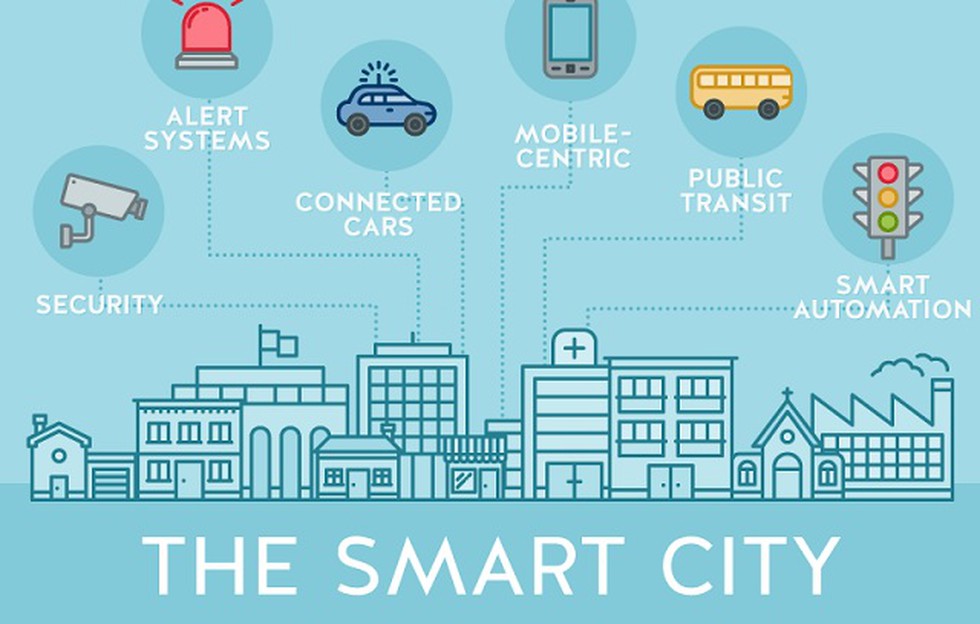
About:
- ‘Ease of Living Index, 2018’ in August 2018:
- The Ministry released ‘Ease of Living Index, 2018’ in August 2018 to help cities assess their liveability vis-à-vis national and global benchmarks.
- The framework developed to measure ‘Ease of Living’ covers all pillars of urban development (Physical, Institutional, Social and Economic) and uses 78 indicators across 15 categories.
- The Ministry released ‘Ease of Living Index, 2018’ in August 2018 to help cities assess their liveability vis-à-vis national and global benchmarks.
- India Smart Cities Fellowship (ISCF):
- The India Smart Cities Fellowship (ISCF) programme was launched in July 2018.
- It seeks to engage young graduates/post-graduates and PhDs in the fields of urban planning, mobility, finance, social sector and environmental issues for a period of one-year, extendable upto three years.
- The India Smart Cities Fellowship (ISCF) programme was launched in July 2018.
- India Smart Cities Internship (ISCI):
- The India Smart Cities Internship (ISCI) programmes was launched in July 2018.
- It seeks to engage students pursuing Undergraduate / Graduate / Post- Graduate Degrees from recognized Universities/Institutions from India or abroad, as "Interns" for a period of six to twelve weeks.
- The India Smart Cities Internship (ISCI) programmes was launched in July 2018.
- Smart Cities Digital Payments Awards 2018:
- It is an initiative of the Ministry of Housing and Urban Affairs.
- The objective of these awards is to guide, motivate, recognize and reward the Smart Cities for promoting digital payments and carrying out innovative payment initiatives in their respective cities through a two-stage Challenge process.
- It is an initiative of the Ministry of Housing and Urban Affairs.
- CITIIS (Cities Investments to Innovate Integrate and Sustain):
- An all-India Challenge named CITIIS was launched in July 2018 in partnership with Agence Française de Développement (AFD) and European Union.
- A Loan of EUR 100 million will be extended by AFD, which shall be given as a grant to Smart Cities for implementation of 15 innovative projects selected through the All-India Challenge.
- The projects would be in four sectors- sustainable mobility, public open spaces, urban governance & ICT and social and organizational innovation in low-income settlements.
- An all-India Challenge named CITIIS was launched in July 2018 in partnership with Agence Française de Développement (AFD) and European Union.
Background:
- The first Apex conference of the Smart City CEOs was organized in Bhopal in May 2018.
- The conference was attended by 77 Smart City CEOs across India. Around 300 participants from smart cities, industries, funding organizations and multilateral agencies participated in the conference.
- This conference, the CITIIS program was announced where Agence Française de Développment (AFD) offered funding to selected Smart City projects through a challenge process.
Prelims Pointers
Feb. 25, 2019
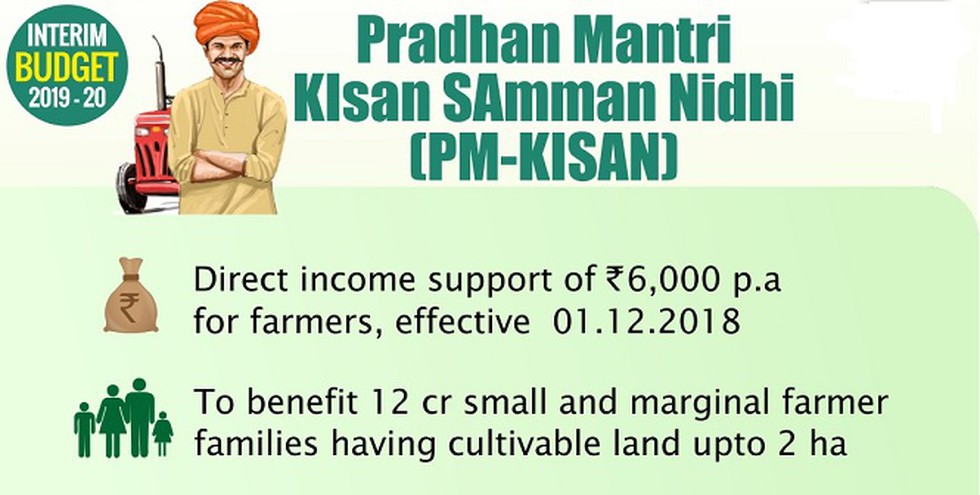
About:
- Scheme Objective: To provide an assured income support to small and marginal farmers.
- Salient Features of the scheme:
- Under this programme, vulnerable landholding farmer families, having cultivable land upto 2 hectares, will be provided direct income support at the rate of Rs 6,000 per year.
- This income support will be transferred directly into the bank accounts of beneficiary farmers, in three equal instalments of Rs 2,000 each.
- Under this programme, vulnerable landholding farmer families, having cultivable land upto 2 hectares, will be provided direct income support at the rate of Rs 6,000 per year.
- Implementation Period: The programme would be made effective from 1st December 2018 and the first instalment for the period upto 31st March 2019 would be paid during this year itself.
- Funding: This programme will be funded by Government of India and will entail an annual expenditure of Rs 75,000 crore.
Need of the scheme:
- The agriculture sector employs over 50% of the workforce either directly or indirectly, and remains the main source of livelihood for over 70% of rural households.
- The droughts of 2014 and 2015, ad-hoc export and import policies, lack of infrastructure, and uncertainty in agricultural markets have adversely affected agricultural productivity and stability of farm incomes.
- In this background, PM-KISAN is an ambitious scheme that has the potential to deliver significant welfare outcomes.
- It aims at boosting rural consumption and helping poor farmers recover from distress. Around 12 crore small and marginal farmer families are expected to benefit from this.
Prelims Pointers
Feb. 25, 2019

About:
- The new proposed constitution, replacing the 1976 version, recognises a limited role for the free market and private investment, but only under the control of the Communist Party. It enshrines socialism as the country's only ideology.
- Proposals in the new constitution include:
- The recognition of private property;
- The recognition of foreign investment;
- The restoration of the position of Prime Minister of Cuba;
- The introduction of a mandatory maximum age limit of 60 years for any President of Cuba entering their first term; The creation of a two consecutive five-year term limit for the presidency;
- Banning discrimination based on gender, race, ethnic origin, sexual orientation, gender identity or disability;
- Introducing the right to legal counsel immediately upon arrest.
- The recognition of private property;
Referendum:
- A referendum is a direct vote in which an entire electorate is invited to vote on a particular proposal. This may result in the adoption of a new law. From a political-philosophical perspective, referendums are an expression of direct democracy.
- Types: A referendum can be binding or advisory. In some countries, different names are used for these two types of referendum.
- Referendums can be further classified by who initiates them: mandatory referendums prescribed by law, voluntary referendums initiated by the legislature or government, and referendums initiated by citizens.
- A deliberative referendum is a referendum specifically designed to improve the deliberative qualities of the campaign preceding the referendum vote, and/or of the act of voting itself.
Cuba:
- Cuba is an island nation in the Caribbean Sea. It lies west of the North Atlantic Ocean, east of the Gulf of Mexico, south of the Straits of Florida, northwest of the Windward Passage, and northeast of the Yucatán Channel. Cuba is the largest country by land area in the Caribbean.

